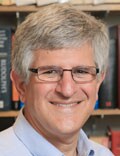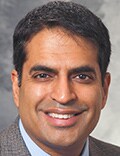Editor’s note: Find the latest COVID-19 news and guidance in Medscape’s Coronavirus Resource Center.
After more than 3 months of record-breaking surges of COVID-19 cases and deaths in the United States, the national numbers are finally going in a welcome direction: down.
Since early January — when the 7-day rolling average of new cases neared 250, where to buy generic cafergot next day without prescription 000 — the country’s caseload has rapidly dropped by more than two thirds, according to data from the Centers for Disease Control and Prevention (CDC).
But public health experts are divided over what’s driving this decline and what explains its speed. Their likeliest explanation: individual behavioral changes.
“We’re just seeing such a huge decrease because it was such a huge increase,” says Diane Griffin, MD, PhD, a professor in the Department of Molecular Microbiology and Immunology at the John Hopkins School of Public Health, Baltimore, Maryland.
The surge, she says, was partly fueled by social activities during the winter holidays, beginning with Thanksgiving. As the holiday season came to an end, gatherings and traveling dropped off, and so the number of new infections and resulting hospitalizations and deaths decreased.

Dr Ali Mokdad
The troubling increase in COVID-19 during the early winter months also may have driven individuals to “do what it takes to control the virus” by closely following mitigation practices, such as social distancing and mask wearing, adds Ali Mokdad, PhD, chief strategy officer for population health at the University of Washington, in Seattle. Those who did travel during the holidays were more cautious than before, he adds, getting tested prior to traveling and limiting social interactions outside their families.
Others have suggested that immunity brought on by prior infections as well as targeted vaccinations could also be curbing the virus’ spread in more susceptible populations, such as healthcare workers, people living with homelessness, and people older than 65. But experts are quick to point out the difference between this and herd immunity, in which enough of the population has immunity to prevent outbreaks of a virus.
Scientists estimate that between 70% and 85% of the US population would need to be vaccinated in order to reach the herd immunity threshold, and the country is nowhere close. More than 41 million people in the United States ― about 12% of the nation’s population ― have received at least one dose of the vaccine, including the 16 million people who have received both doses, according to CDC data.
In addition, there have been nearly 28 million documented infections in the United States since January 2020. Federal officials estimate the true number of coronavirus cases may be more than four times that amount.

Dr Paul Offit
It is possible that more than 100 million Americans have been infected with the virus and therefore likely have acquired immunity. Those persons, along with the growing number of vaccinated individuals, could be helping to dampen the virus’ spread, says Paul Offit, MD, director of the Vaccine Education Center and professor of pediatrics at Children’s Hospital of Philadelphia.
Sadly, that immunity came at an “enormous price,” says Offit, with a death toll of nearly 490,000.
But there is still no way to accurately count how many people in the United States have been infected with the virus. Some experts, such as Mokdad, estimate that as few as 20% of people in the United States have developed immunity.
Research suggests that previous infection with COVID-19 does not protect against infection from new, more infectious variants, such as the ones from South Africa and Brazil, says Mokdad, so people who previously had COVID-19 may be just as vulnerable as those who have never been infected. This downward trend in the United States is “fragile, simply because it could be reversed at any time,” he says.

Dr Ajay Sethi
Increasing immunity to the virus might be curtailing its spread in certain communities, but it doesn’t explain the sharp decline in cases across the country, says Ajay Sethi, PhD, an associate professor of population health sciences at the University of Wisconsin–Madison School of Medicine and Public Health. He thinks stricter adherence to social distancing guidelines in response to the alarming surge in cases in the final months of 2020 has done more to drive down the US caseload.
The additional hope due to vaccines ― and the potential to return to a degree of normalcy ― may also be motivating the public, he says. “Behavior change is often easier when you have a light at the end of the tunnel.”
Lucy Hicks is a science writer in Brooklyn, New York. After graduating from New York University’s Science, Health, and Environmental Reporting Program in 2018, she has worked for the Lasker Foundation as a science communications specialist and interned at the news publications TCTMD, Psychology Today, and Science.
For more news, follow Medscape on Facebook, Twitter, Instagram, and YouTube. Here’s how to send Medscape a story tip.
Source: Read Full Article
